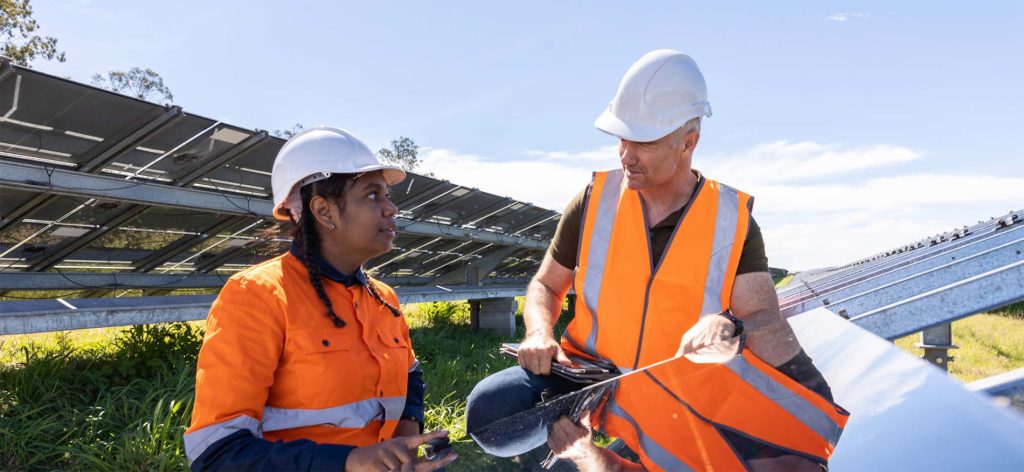Why Employing Migrant Workers Is Essential To Australia’s Work Force
Australians are no strangers to the labour shortages ravaging the county nationwide. With industries such as infrastructure, utilities, wealth management, insurance, and manufacturing set to see rapid growth over the next 3 years, businesses are needing to adapt and pivot to help carry Australia’s’ ageing population and ever-growing employment landscape. Migration has played a vital…
Australians are no strangers to the labour shortages ravaging the county nationwide. With industries such as infrastructure, utilities, wealth management, insurance, and manufacturing set to see rapid growth over the next 3 years, businesses are needing to adapt and pivot to help carry Australia’s’ ageing population and ever-growing employment landscape.
Migration has played a vital role in the growth of the Australian workforce for over twenty years; with new migrants being the main contributors to employment growth within all industries. According to the Australian Home Affairs, almost one-third of the total job growth in Australia was attributed to new migrants in the five years leading up to June 2002. However, the Covid-19 pandemic put a stop to the migrant workforce, causing a surge in labour shortages across the country. Now, in 2023, despite the rapid growth observed in several industries, the Australian job market is currently facing a major challenge. The available talent pool to fill the increasing number of job vacancies is alarmingly scarce. This phenomenon has led to a pressing issue for businesses and employers in Australia, as they strive to find the right fit for their organisational needs.
The impact of migration on Australia’s labour market is a crucial factor that affects the population and demographics of the country. Over the past two decades, migrants have significantly contributed to the growth of the labour force, as indicated by recent statistics. In June 2022, new migrants accounted for 38.8% of additional jobs, while Australian-born workers accounted for 40.1%, and established migrants accounted for 21.1%. As of June 2022, the unemployment rate for migrants was recorded at 3.4%, only slightly lower than the rate for Australian-born workers at 3.9%. This data shows the lowest unemployment rate for migrants since 1991 and the lowest for Australian-born workers since October 2008. These numbers highlight the critical role of migration in the Australian labour market and its potential impact on the country’s economy.
The National Skills Commission recently released a report on Australia’s employment growth from November 2021 to November 2026. The report predicts significant employment growth for Manufacturing industry jobs such as Production Managers, Food and Drink Factory Workers, and Meat, Poultry, and Seafood Process Workers. For the construction industry, a moderate increase of 5.8% is expected. Technicians and Trades Workers will see the largest employment growth, followed by Labourers and Clerical and Administrative Workers. Professional occupations are projected to grow at 14.7%, while clerical and administrative occupations will grow by 3.9%. The Australian financial services industry will also experience growth, increasing from 490,500 workers in 2021 to 518,800 in 2025 due to rising demand for superannuation and financial planning services as Australia’s population ages.
Employers are gearing up to expand their workforce, but there is a problem: recruitment difficulties. The latest Labour Marketing Insights survey reveals that over 60% of recruiting employers are struggling to find the right talent, despite a modest improvement in the last month. With the Manufacturing industry projected to experience significant growth, particularly for higher-skilled positions, finding the right candidates will be a critical challenge. Could international talent be the answer? As employers navigate the current labour market, considering overseas talent could be a viable option to secure the necessary skills and expertise. As the competition for top talent heats up, attracting and retaining the best employees will be the key to success.
Migration has always been a crucial component in bolstering the Australian workforce, but the pandemic has dealt a heavy blow to the entry of immigrant workers into the country. However, as restrictions are slowly lifted, sponsoring migrant workers has become a viable solution for employers looking to grow their talent pool. While the process of sponsoring international talent may seem overwhelming, our team has partnered with an Immigration Lawyer to provide comprehensive assistance in finding the right candidates for the right positions.
Interested in discovering more about your eligibility and the application process? Get in touch with us now by completing the form on this page.








